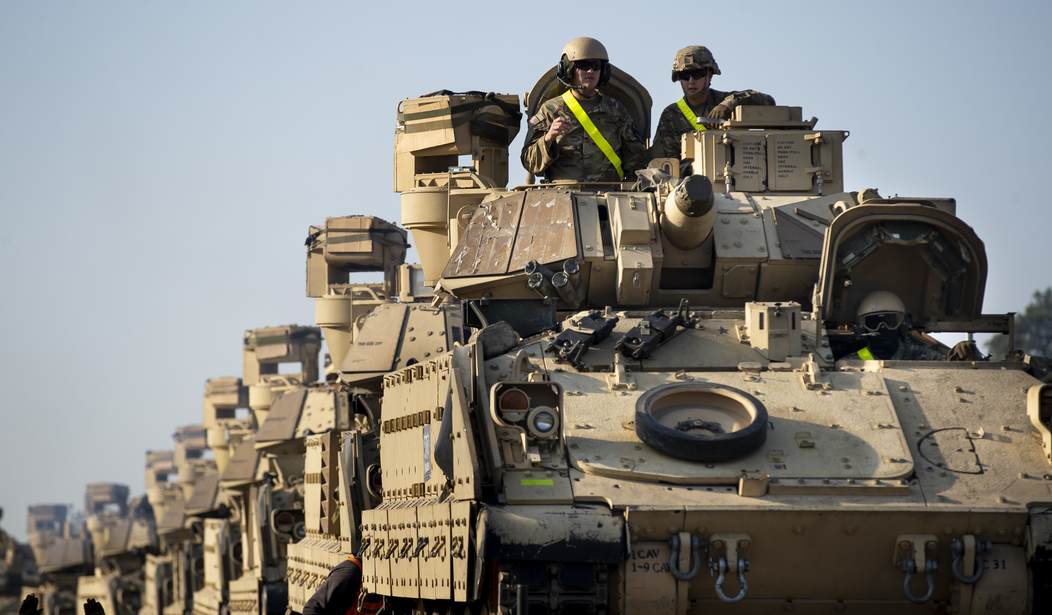Finland officially joined NATO on Tuesday, thus giving the alliance another 800 miles of a border with Russia. The alliance hailed the move as a way to bolster its security.
“For almost 75 years, this great alliance has shielded our nations and continues to do so today,” NATO Secretary-General Jens Stoltenberg declared at the ceremony. “But war has returned to Europe and Finland has decided to join NATO and be part of the world’s most successful alliance.”
“From today, 31 flags will fly together as a symbol of our unity and solidarity,” Stoltenberg said moments before. “Joining NATO is good for Finland, good for Nordic security, and good for NATO as a whole.”
This is another push to the east by NATO — a move that Russian President Vladimir Putin cited as one of the reasons he invaded Ukraine. Russia’s nightmare of being encircled by its enemies may be a paranoid delusion but it’s been a part of Russian foreign policy since 1945.
George Kennan, a man with an uncommon vision and understanding of the old Soviet Union, wrote his famous “Long Telegram” in 1946 about Russian insecurity and could have been describing either Stalin or Putin.
But this latter type of insecurity was one which afflicted rather Russian rulers than Russian people; for Russian rulers have invariably sensed that their rule was relatively archaic in form fragile and artificial in its psychological foundation, unable to stand comparison or contact with political systems of Western countries. For this reason they have always feared foreign penetration, feared direct contact between Western world and their own, feared what would happen if Russians learned truth about world without or if foreigners learned truth about world within. And they have learned to seek security only in patient but deadly struggle for total destruction of rival power, never in compacts and compromises with it.
Finland had been neutral since the end of World War II but rushed to join NATO with the invasion of Ukraine. “The era of nonalignment in our history has come to an end — a new era begins,” President Sauli Niinistö said before his country’s blue-and-white flag was raised outside NATO headquarters.
But was Finland joining NATO? Or was it looking for America’s security shield to protect it from the Russian bear? Realistically, there is no NATO, only the United States. Without the U.S., NATO would immediately collapse. It wouldn’t be able to defend itself. So all this talk about the world’s “most successful alliance” matters little without the massive support of the United States and its tacit agreement to use its nuclear shield to defend NATO countries.
Ben Hodges, a former commander of U.S. Army Europe, points out that this hardly matters. “Nobody should be worried about NATO,” he said. “There’s a reason there is a queue to join. Nobody is knocking on the Kremlin’s door saying, ‘Hey, let us back in.’”
Both Finland and Sweden applied for NATO membership last spring. But NATO member Turkey held up both applications because of their liberal asylum policies, shielding members of the Kurdish group PKK that Turkey believes are terrorists. Turkey ironed out some issues that were keeping Finland from joining and is now in the process of negotiating Sweden’s entrance into the alliance.
“I’m tempted to say this is maybe the one thing that we can thank Mr. Putin for because he once again here precipitated something he claims to want to prevent by Russia’s aggression, causing many countries to believe that they have to do more to look out for their own defense and to make sure that they can deter possible Russian aggression going forward,” U.S. Secretary of State Antony Blinken said before accepting the documents that made Finland’s membership official.
The ultimate question is what Putin will do now that NATO has expanded its border with Russia.
“We will be watching closely what is going on in Finland, how the NATO alliance will use Finnish territory in terms of deploying weapons, systems, and infrastructure there, which will be close to our borders and therefore threaten us,” Kremlin spokesman Dmitry Peskov said in his daily briefing to journalists. “Depending on this, measures will be taken.”
An alliance is only as strong as its weakest member. Finland has a robust military tradition, and its army has given the Russian army fits in the last hundred years. Sweden, on the other hand, would be one of NATO’s weakest members if it ends up joining.
The strength of an alliance is not in how many flags are flying over its headquarters but rather in how its military power is perceived by its enemies. Russia is more worried about what advanced military technology will be based in Finland rather than any augmented threat from NATO’s growing roster of countries.










